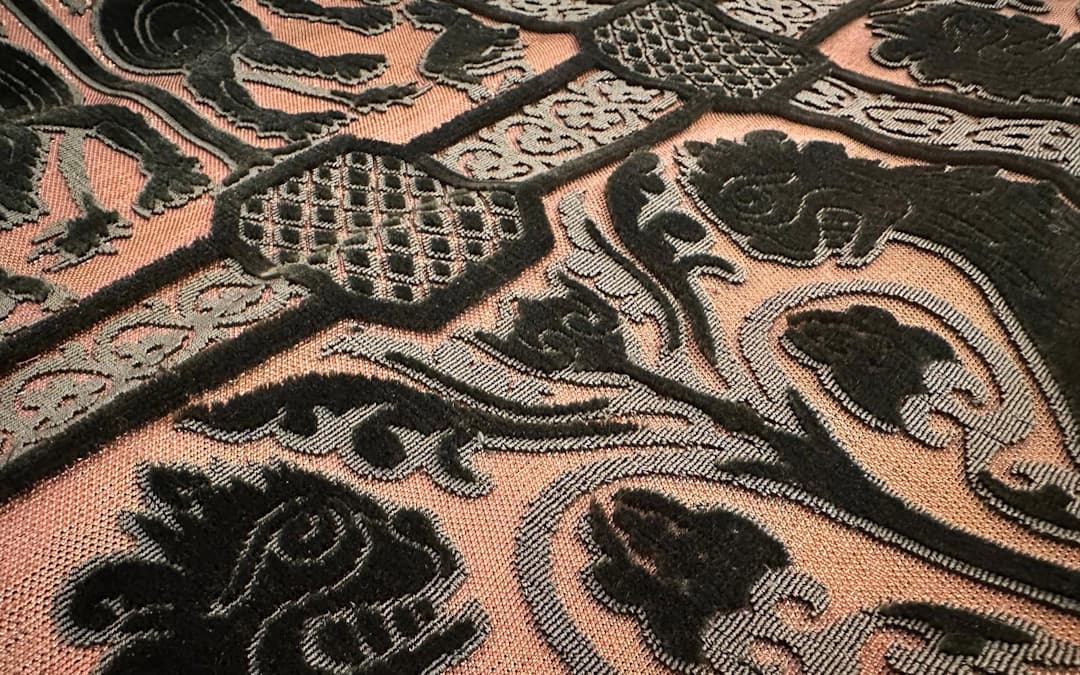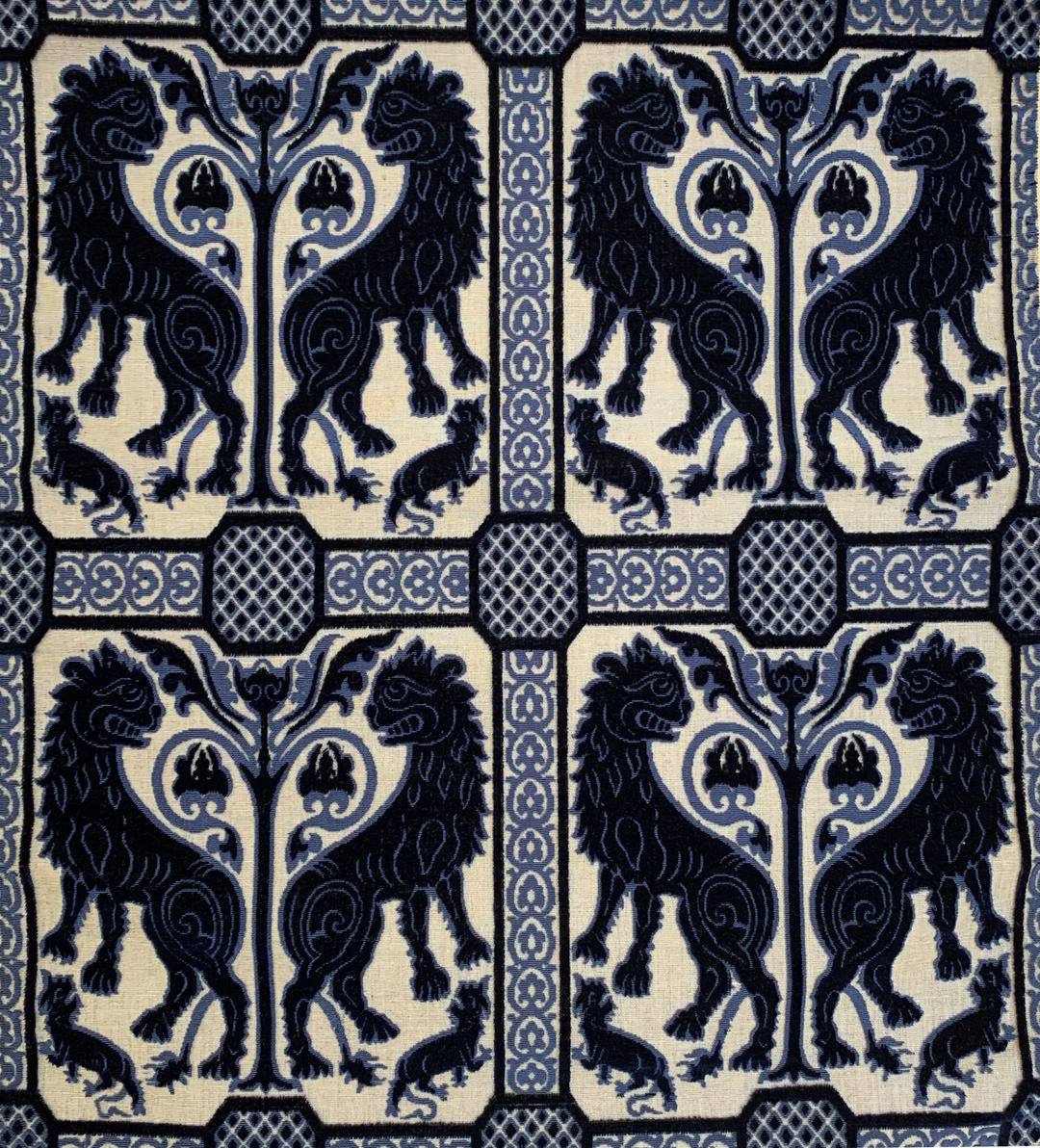Venice was the leader of the silk industry until the 18th century, regulating it with a strict system of rules to ensure its excellence. The artisans of this industry were organized into guilds, or “Arts,” and had their own codes and fascinating traditions. Join us as we explore the history and secrets of the Art of Silk in Venice.
The First Producers of Silk Textiles in Venice
In a previous article, we recounted a legend about the arrival of silk in Venice. The story’s protagonists were Emperor Henry IV and a Venetian lady he had fallen in love with. To win her over, he gifted her a precious silk and gold robe made by his Greek tailor, an expert in weaving.
As is often the case with legends, this one also contains an element of truth. The reference to the “Greek tailor” recalls Byzantine craftsmen who were repositories of a refined silk tradition. Venice imported sericulture from the Byzantine Empire, probably after the Sack of Constantinople in 1204. The Venetians brought home the famous four horses, which are now displayed on the facade of St. Mark’s Basilica, and also came into direct contact with the knowledge and craftsmanship of the Greek East.
The Samite Weavers Guild
A few years later, in 1265, the statute of the Arte dei Samiteri appeared among the Republic of Venice’s documents. The Samiteri were the weavers of samite, the most valuable silk cloth of Persian origin in the Middle Ages. It was very heavy and often embellished with gold threads.
However, the Samiteri guild was dedicated not only to producing these fabrics but also brocades, damasks, and, it is assumed, velvets. An archival document from 1316 testifies to an order for “tres samitos pillosos,” or velvety samites.
The Arte dei Samiteri’s church was that of the Jesuits in the sestiere (district) of Cannaregio, and their patron saint was St. Christopher flanked by the Virgin Annunciata. Arts’ churches were not chosen at random: each guild elected its spiritual and ceremonial headquarters there, a place to gather for feasts, votive masses, members’ funerals, and solemn assemblies. The patron saint, chosen according to the symbolism of the trade or local devotion, represented a moral and protective reference for the entire community of artisans.
Later, however, the Samiteri had to share the church with an emerging guild, the Veluderi.
Leoni Soprarizzo Velvet features a typical “samite” pattern
The Art of the Veluderi and the Weavers from Lucca
Velvet became a Venetian monopoly in the 14th century, and in 1347, velvet weavers obtained their own guild, the Arte dei Veluderi. This reflected the growing importance and diversification of the silk industry in Venice at that time.
The development of velvet weaving in Venice is believed to have received a significant boost from the influx of spinners, weavers, and dyers from Lucca. These artisans were authentic masters of silk art, who fled their city for political reasons.
The Lucchese refugees were granted the privilege of citizenship and an area to settle between the church of Santi Apostoli, Calle della Bissa, and the churches of San Giovanni Grisostomo and San Canciano, a few hundred meters from the church of the Veluderi and Samiteri. From 1360 onward, they formed their own guild, the Corte della Seta, electing the Holy Face, a miraculous crucifix venerated in their city of origin, as their patron saint.
However, foreign and domestic competition threatened the economic success of Venetian textiles. In 1366, the three Arts decided to merge.
The Art of the Silk Spinners
The Art of Filadori de Seda (silk spinners) was officially recognized in 1488; however, silk spinning had been practiced and regulated in Venice since at least the 14th century. Initially active in the Campo dei Gesuiti area, the Filadori later moved their headquarters to the prestigious Scuola Grande di Santa Maria della Misericordia, a symbol of the social and religious roots of the Venetian arts.
Initially, the spiritual patrons of the Art were the Virgin Annunciata and St. Christopher. These figures were already venerated by the Samiteri, with whom the Filadori were closely linked due to the complementary nature of their crafts.
To understand the economic and social importance of silk in Venice, consider a few numbers:
Number of weavers in 1493
Number of weavers in 1554
However, the industry was not limited to weavers. It included a vast network of spinners, dyers, designers, merchants, and homeworkers-often women-who contributed greatly to production. Silk processing was a widespread industry intertwined with the daily lives of hundreds of families.
Because of this, the rules that regulated the Art were numerous and rigorous. They established quality standards, learning methods, the use of materials, and measures against unfair competition.
Thanks to this collective discipline, Venetian textiles acquired an extraordinary reputation in European and Eastern markets, becoming synonymous with luxury, refinement, and craftsmanship.
Cover Photo: Leoni Soprarizzo Velvet, Antique Green-Silver



